
How Xi Jinping transformed China
 How Xi has changed China
How Xi has changed China October 18, 2022
When Chinese leader Xi Jinping came to power in 2012, he unveiled a sweeping vision for the “great rejuvenation” of the country — a "dream” that would make China powerful and prosperous.
Ten years later, Xi has transformed China. He has consolidated the country as a force on the world stage, with an expansive economic footprint, a modernizing military and rising technological prowess.
But China has also become an increasingly restrictive place for its citizens, with swift suppression of dissent, pervasive surveillance and mounting social controls, which have only grown more pronounced under Xi’s costly and isolating zero-Covid policy.
With the Chinese Communist Party in the midst of its five-yearly leadership reshuffle, CNN looks back at a decade of dramatic change for China that has set the stage for the country’s next chapter, as Xi — its most powerful leader in decades — steps into an expected norm-breaking third term.
Power to the partyXi has overseen a wide-scale anti-corruption campaign within the Communist Party to cement his grip on power. Critics have called it a political purge, but the push has appeared to win public support for cracking down on a culture of excess and corruption among both “tigers” — high-ranking officials — and “flies” — lower-level cadres.
millionofficials investigated since the 18th Party Congress in late 2012, when Xi came to power.
of them were senior officials.
Source: CCP Central Commission for Discipline Inspection (2022)





Credits (from top right): Ng Han Guan/AP, Kevin Frayer/Getty Images, Noel Celis/AFP/Getty Images, Ng Han Guan/AP, Nicolas Asfouri/AFP/Getty Images.
Credits (clockwise from top left): Ng Han Guan/AP, Kevin Frayer/Getty Images, Nicolas Asfouri/AFP/Getty Images, Noel Celis/AFP/Getty Images, Ng Han Guan/AP.
Xi has also built a cult of personality around himself as the “core” of the party and strengthened its role in all aspects of life.
Rising global powerXi’s China has sought to reshape a world order that it sees as dominated by the United States. Beijing has leveraged its economic strength to expand global influence, while modernizing its military and using combative diplomats and an overseas state media apparatus to defend itself and vilify the West.
Here are some key elements of China’s ambitious foreign policy:
 Belt and Road Initiative
Belt and Road Initiative Chinese entities have poured what US-based research lab AidData estimates to be an average $85 billion annually into financing infrastructure from Southeast Asia to Latin America under Xi's flagship project — despite criticisms of risky lending.
Credit: Ishara S. Kodikara/AFP/Getty Images
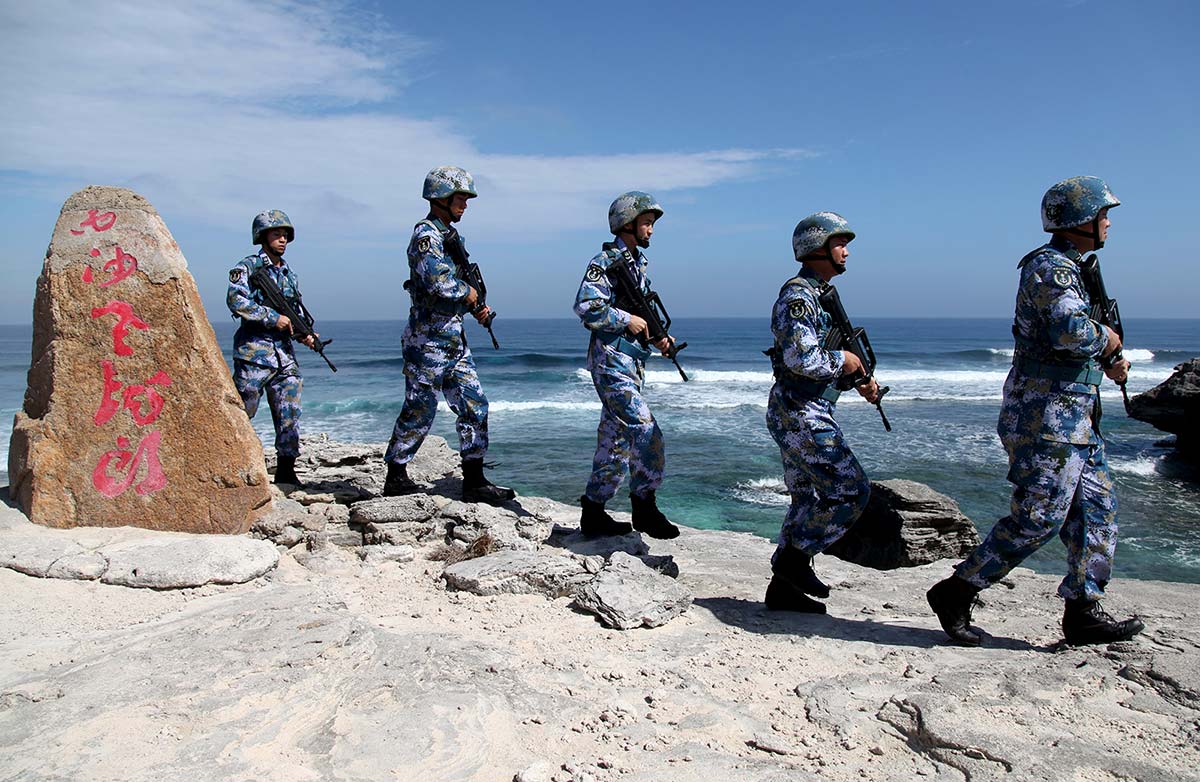 Territorial claims
Territorial claims Beijing has grown assertive in its territorial claims — militarizing islands in the South China Sea, clashing with India at a disputed Himalayan border, stoking tensions with Japan over uninhabited islands and ramping up rhetoric on its claim to Taiwan.
Credit: Stringer/Reuters
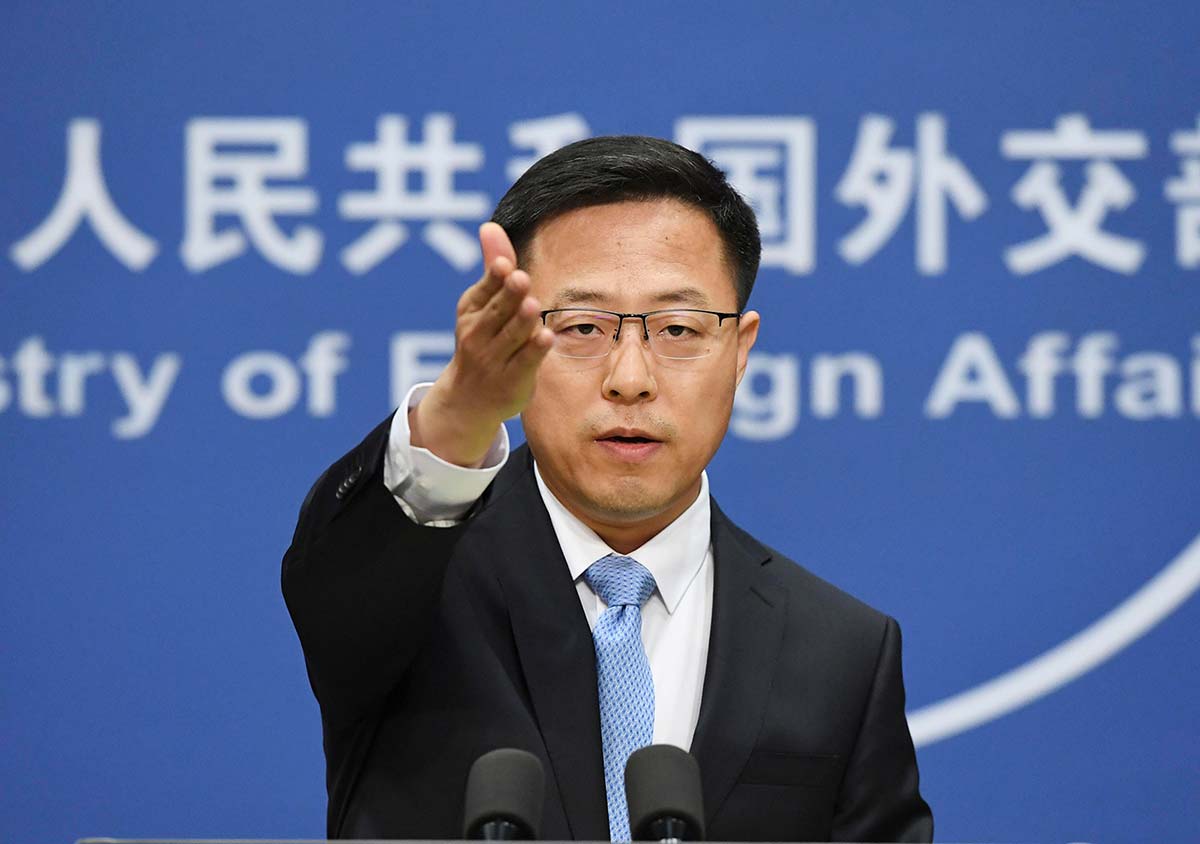 “Wolf warriors”
“Wolf warriors” Beijing has favored a new kind of diplomat: combative, assertive and ready to lash out, whether in the United Nations or on social media, to defend Xi's policies.
Credit: Kydpl Kyodo/AP
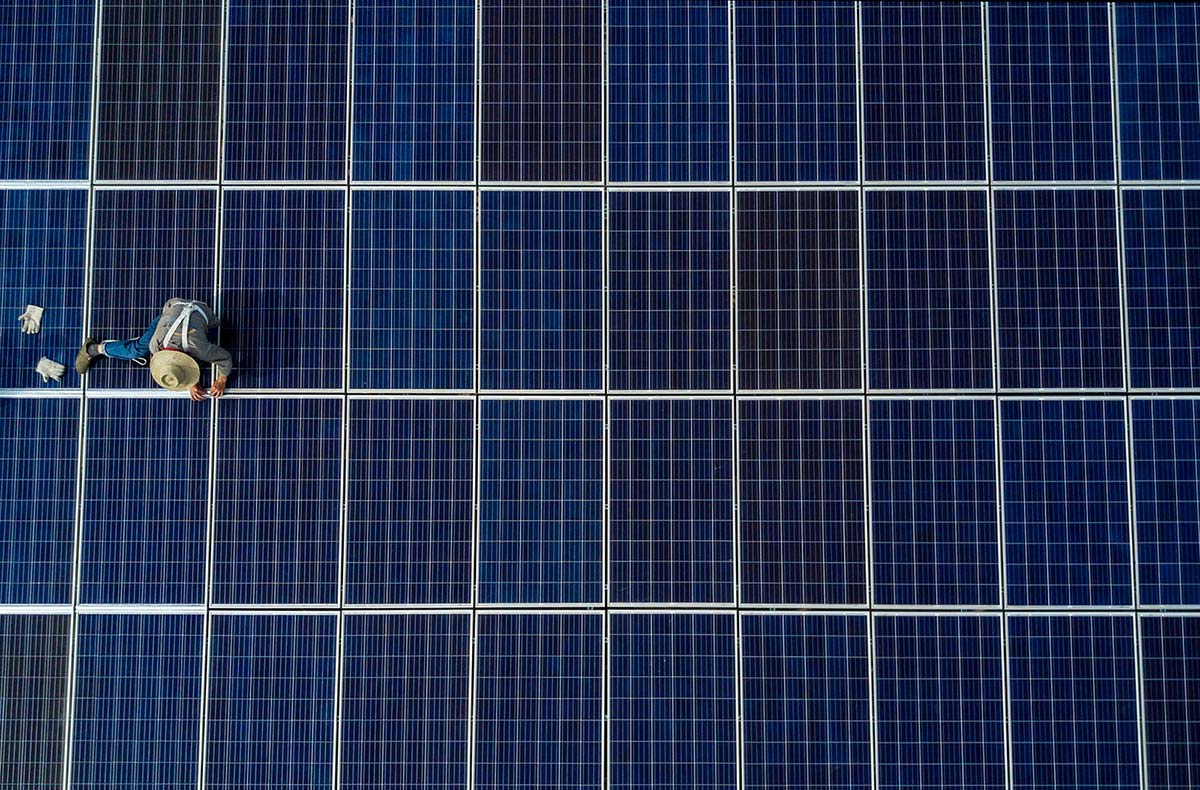 Climate leadership
Climate leadership Xi has pledged that China, a top greenhouse gas emitter, will go carbon neutral by 2060 and stop building coal plants overseas — though transparency remains limited.
Credit: Kevin Frayer/Getty Images
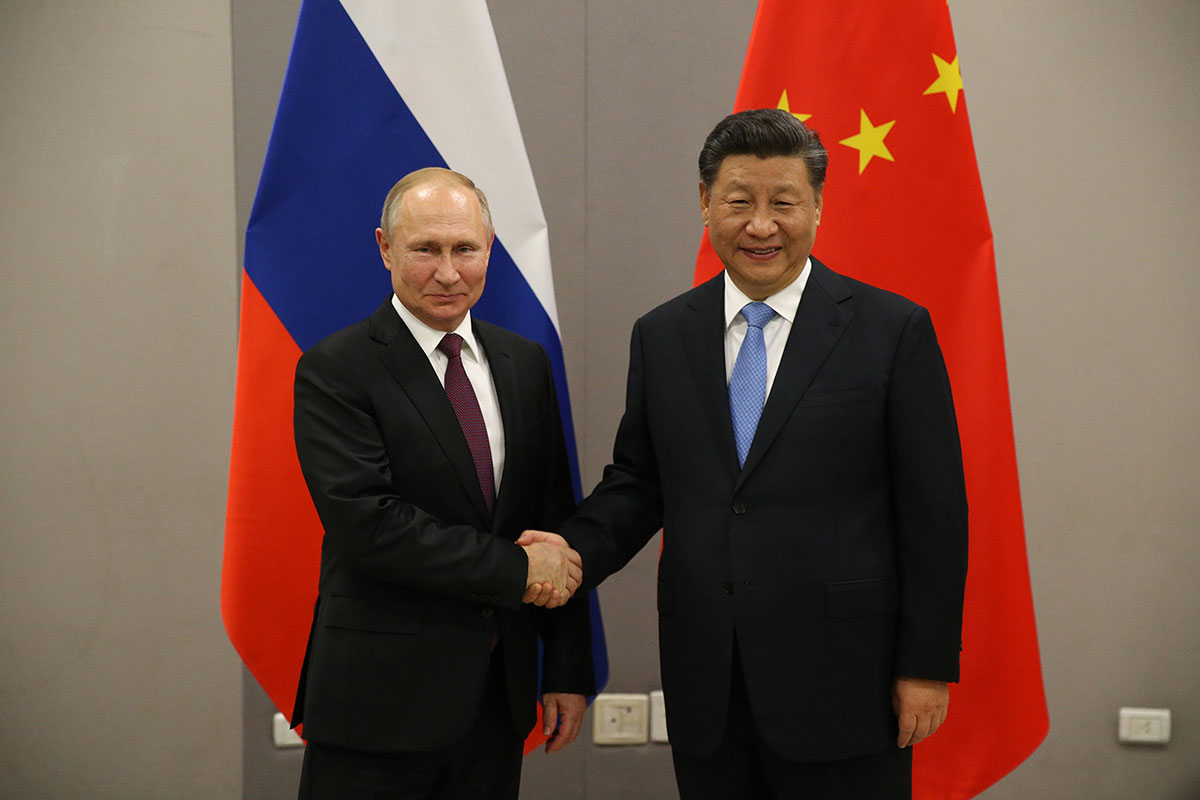 Closer to Russia
Closer to Russia Beijing and Moscow have tightened their “strategic partnership” in recent years, drawn closer over respective tensions with the West and the personal rapport between Xi and Russian President Vladimir Putin.
Credit: Mikhail Svetlov/Getty Images
Beijing’s human rights record, assertive foreign policy, handling of Covid-19 and close ties with Moscow are among factors that have damaged perceptions of China in the West — and its relationships with governments there.
American perceptions of China have declinedHow Americans view China
2006 2008 2010 2012 2014 2016 2018 2020 0 10 20 30 40 50 60 70 80% Favorably Unfavorably 82% 16% Xi Jinping comes to power in November 2012Values for 2021 and 2022 are surveys the Pew Research Center conducted online. Values for 2020 and earlier represent surveys conducted over the phone.
Source: Pew Research Center Global Attitudes Survey



Credits (from top to bottom): Kevin Frayer/Getty Images, Li Tang/VCG/Getty Images, Li Bingyu/Xinhua/AP.
Military expansionXi launched an extensive project to reform and modernize the People’s Liberation Army and transformed China’s navy into the world’s largest by fleet size, with its first overseas military base opening in Djibouti in 2017.
China has built the world’s largest navyAccording to comparative estimates by the US Office of Naval Intelligence in 2020, China was on track to have 63 more battle-force ships than the US.
Battle-force ships
2000 2005 2010 2015 2020 100 200 300 400 US ChinaData for China (2020) are estimates. Figures for China are for end of calendar year, figures for US are for end of fiscal year.
Source: Congressional Research Service
Pressure on TaiwanXi has also stressed a national goal of “reunifying” with Taiwan — by force, if necessary. China’s military has ramped up its intimidation of the self-governing democracy, which has never been ruled by the Communist Party, at times sending dozens of warplanes a day close to the island.
"Common prosperity"Turning China into a “moderately prosperous society” has been a cornerstone of Xi’s decade in power. Early on, he trained his sights on eliminating “absolute poverty” in rural areas.
During these early years, private companies thrived mostly unimpeded and a consumer tech revolution bloomed — enhancing daily conveniences for a growing middle class, as China transitioned from an industrial hub to a services and high-tech economy.
 Performers carry red balloons during the filming of a Chinese Communist Party propaganda video in the upscale shopping area Sanlitun in Beijing in 2021. Credit: Thomas Peter/Reuters
Performers carry red balloons during the filming of a Chinese Communist Party propaganda video in the upscale shopping area Sanlitun in Beijing in 2021. Credit: Thomas Peter/Reuters In more recent years, Xi has tightened regulations to tamp down on debt, property speculation and financial risk, while also upping Communist Party control within the economy. His “common prosperity” vision to narrow the wealth gap and broad campaigns to rein in powerful companies have appeared to signal the end of an era of freewheeling private enterprise.
Some of these moves, along with the zero-Covid policy, have contributed to higher unemployment and dragged down China’s already slowing growth.
China's economic growth has slowedChina's GDP growth is expected to drop to 2.8% in 2022, just above the 2.2% recorded during the first year of the pandemic in 2020.
Annual GDP growth
2000200520102015202002468101214%Note: 2022 figure is estimated.Source: World Bank2022 figure is estimated.
Source: World Bank
millionrural residents no longer living below China's standard of "absolute poverty" since 2012.
billioninternet users in China as of June 2022, up from 564 million in 2012.
kilometers (about 20,000 miles) added to China's high-speed rail network since late 2012.
$ trillionestimated loss in market value for Chinese companies worldwide at the height of China's 2021 crackdown on private enterprise.
Source: China’s State Council Information Office, China Internet Network Information Center, Xinhua news agency, and Goldman Sachs
“Serious rights violations” in XinjiangChina has long stifled the twin perceived threats to Chinese nationalism of religious and ethnic identity. Under Xi, nowhere have those policies been more sweeping in a short period than the far western region of Xinjiang, where he pledged to crack down on terrorism and separatism following ethnic unrest.
That campaign has resulted in what the UN’s top human rights office in an August report called “serious human rights violations” against Uyghur and other predominately Muslim ethnic minorities that could amount to crimes against humanity. China firmly denies this and allegations of wrongdoing in the region.
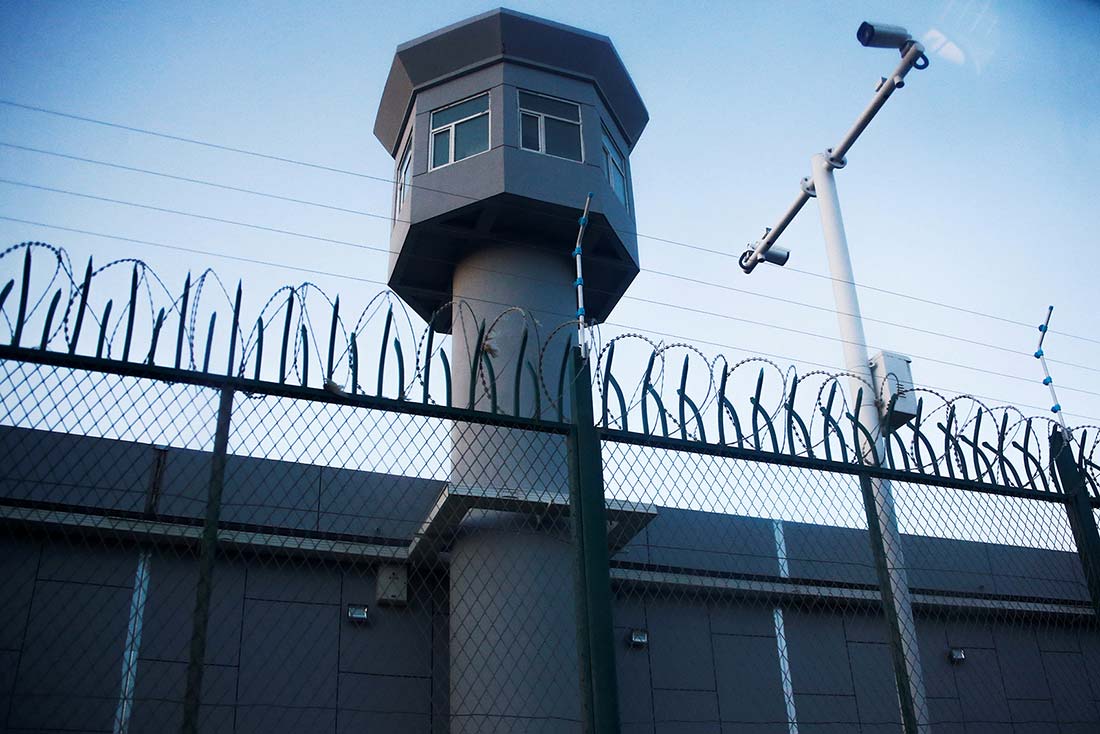
An estimated more than 1 million Uyghur and other minorities have been interned in detention facilities, according to rights groups, where there are reports of torture and sexual abuse. China said it dismantled what were “education and training” centers, but researchers say some detainees were transferred to prisons.
Credit: Thomas Peter/Reuters

A far-reaching system of video surveillance, police checkpoints, biometric data collection and digital monitoring in Xinjiang, all cited in the UN report, is believed to have enabled local authorities to track and target Muslim minorities.
Credit: Greg Baker/AFP/Getty Images
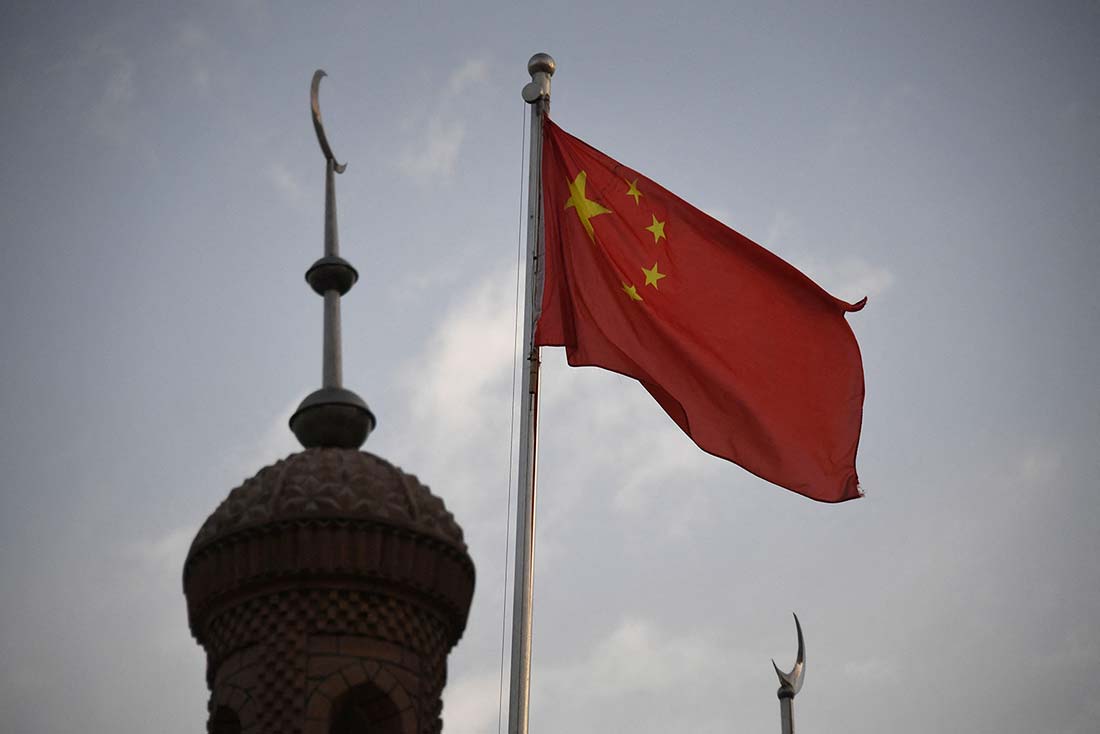
Authorities have repressed Uyghur and other ethnic groups’ cultural identity, including by restricting religious practice, rights groups say. Researchers have also documented the destruction of religious sites, such as mosques and cemeteries.
Credit: Greg Baker/AFP/Getty Images
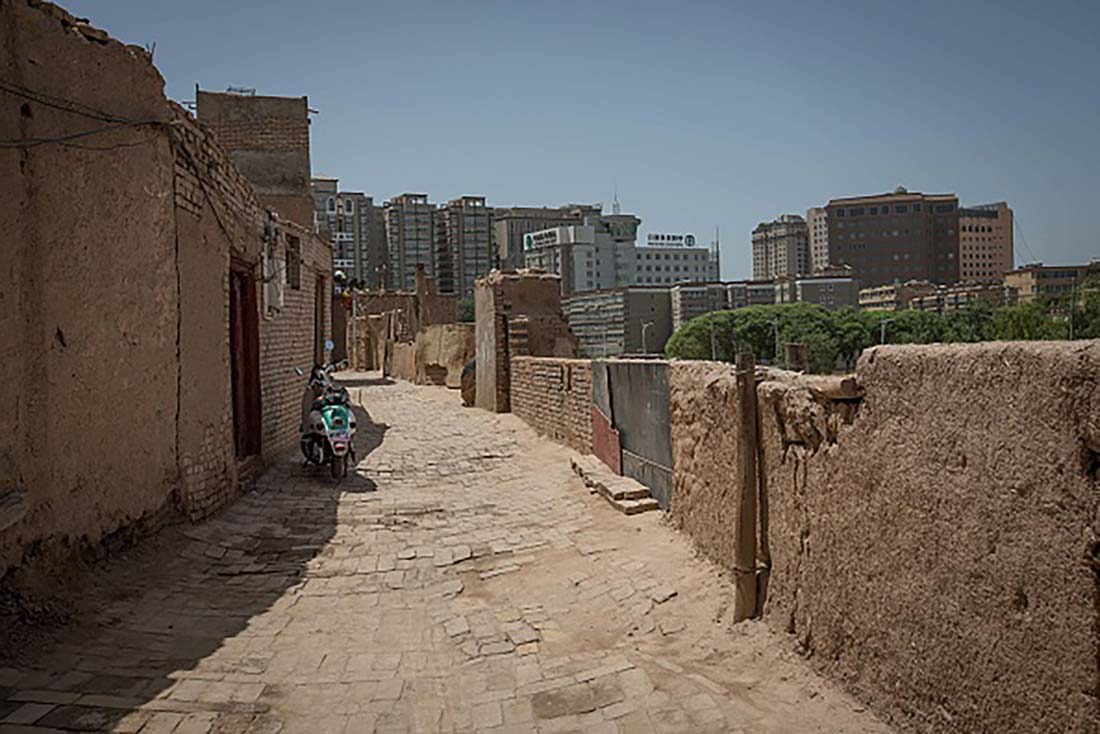
Mass detentions and other controls restricting movement into and out of the region have resulted in painful, years-long family separations. There have also been reports of forced sterilization and birth control.
Credit: Guillaume Payen/Sopa Images/LightRocket/Getty Images
End of one-child policyPlummeting birth rates — and the economic risks of an aging society and shrinking workforce — pushed China to overhaul decades of restrictive birth controls, ending its one-child policy in 2015. The demographic crisis continued, and in 2021 China further relaxed its rules, allowing families to have three children.
But for many young people grappling with unattainable home prices, long workdays and a challenging job market, the government’s push for marriage and children remains unappealing — especially for women, who still bear the brunt of child raising due to entrenched gender norms.
“We’re the last generation.”
a viral slogan embraced by China’s disaffected young people A looming population crisisBirths per 1,000 people
2010 2012 2014 2016 2018 2020 0 2 4 6 8 10 12 14 2015 One-child policy relaxed 2021 Three-child policy introduced 2021 Three-child policy introduced Source : The National Bureau of Statistics of ChinaSource: The National Bureau of Statistics of China



Credits (from top to bottom): Nicolas/Asfouri/AFP/Getty Images, Isaac Lawrence/AFP/Getty Images, Nicolas/Asfouri/AFP/Getty Images.
Crackdown on Hong KongMass pro-democracy protests in Hong Kong in 2019, which brought hundreds of thousands to the streets, posed the greatest challenge for the city’s government since the handover from British to Chinese rule in 1997.
Beijing responded by backing a broad crackdown, including through the introduction of a national security law in 2020 that critics say has been used to crush the city’s opposition movement, overhaul its electoral system, silence its outspoken media and cripple its once-vibrant civil society.
people have been arrested under the national security law. As of June, 124 individuals and 5 companies have been prosecuted.
people have been arrested for their involvement in the 2019 protests, among whom 2,804 have been prosecuted.
Source: Hong Kong’s Security Bureau
We must ensure that Hong Kong is administered by patriots … There is no country or region in the world where its people will allow an unpatriotic or even treasonous force or figure to take power.”
Chinese leader Xi Jinping at the 25th anniversary of Hong Kong’s handover on July 1, 2022. Stifling dissentXi has overseen a mass crackdown on civil society, choking an already limited sector by targeting or jailing human rights lawyers, academics, journalists, feminists and activists. The Xi era has also included broad efforts to smother all forms of dissent and bolster the control of information, including by ramping up surveillance and online censorship.
During the so-called “709” crackdown in 2015, around 300 human rights lawyers and activists were rounded up for interrogation, according to monitoring groups, with some later handed prison terms — a sweeping, state-backed blow to civil rights in China.
I will keep defending Wang Quanzhang’s rights. I will take care of our child and wait for Wang Quanzhang to come home.”
Li Wenzu, wife of prominent human rights lawyer Wang Quanzhang imprisoned during the 709 crackdown, said in 2019. Wang, who was formally sentenced by a Chinese court that year, was released from prison in 2020. Li Wenzu, whose husband was imprisoned during the 709 crackdown, protests by shaving her head in Beijing in December 2018. Credit: Fred Doufour/AFP/Getty Images Technology powerhouse and digital surveillance
Li Wenzu, whose husband was imprisoned during the 709 crackdown, protests by shaving her head in Beijing in December 2018. Credit: Fred Doufour/AFP/Getty Images Technology powerhouse and digital surveillance Xi has called innovation the “soul driving a nation's progress” and increased funding for research, while overseeing a push to make China a leader across high-tech fields from space to quantum computing and AI to green energy.
China’s high-tech capabilities also have another focus: tracking the public through the installation of massive video surveillance systems and biometric data collection — efforts that have intensified in the name of fighting Covid-19.
 A rocket carrying a module for China’s Tiangong space station lifts off from the Wenchang Space Launch Center in Hainan province in April 2021. Stringer/AFP/Getty Images An estimated 770 million surveillance cameras were installed worldwide in 2019. More than half of those were expected to be in China
A rocket carrying a module for China’s Tiangong space station lifts off from the Wenchang Space Launch Center in Hainan province in April 2021. Stringer/AFP/Getty Images An estimated 770 million surveillance cameras were installed worldwide in 2019. More than half of those were expected to be in China Cameras installed worldwide in 2019
China54%Othercountries46%Source: IHS Markit, UNSource: IHS Markit



Credits (from top to bottom): Stringer/Getty Images, Tian Yuhao/China News Service/Getty Images, Kevin Frayer/Getty Images.
Zero-Covid policySince China brought the world’s first outbreak of Covid-19 under control in early 2020, Beijing has adopted a zero-tolerance playbook to quell resurgences, harnessing the force of the authoritarian state and its surveillance power to impose lockdowns, force centralized quarantines and mandate regular Covid-19 testing. While the policy initially appeared to have broad public support, two years later discontent is rising.
The policy, lauded by Xi, has also radically changed how China interacts with the rest of the world. Border restrictions have shut out international students and business travelers who once flocked to China, while overseas trips by mainland Chinese tourists have all but dried up.
Today’s China is more isolated and nationalistic than it’s been in decades, even as its economy falters — posing significant challenges for the country as Xi appears poised to drive his agenda forward into a third term.
From this day forward, the central task of the Chinese Communist Party is to lead the Chinese people of all ethnic groups in a concerted effort … to advance the rejuvenation of the Chinese nation on all fronts through a Chinese path to modernization.”
Xi Jinping General Secretary of the Chinese Communist Party, speaking at the opening of the 20th Party Congress on October 16, 2022.AP by OMG
Asian-Promotions.com |
Buy More, Pay Less | Anywhere in Asia
Shop Smarter on AP Today | FREE Product Samples, Latest
Discounts, Deals, Coupon Codes & Promotions | Direct Brand Updates every
second | Every Shopper’s Dream!
Asian-Promotions.com or AP lets you buy more and pay less anywhere in Asia. Shop Smarter on AP Today. Sign-up for FREE Product Samples, Latest Discounts, Deals, Coupon Codes & Promotions. With Direct Brand Updates every second, AP is Every Shopper’s Dream come true! Stretch your dollar now with AP. Start saving today!
Originally posted on: https://edition.cnn.com/interactive/2022/10/asia/china-party-congress-change-under-xi-intl-hnk/